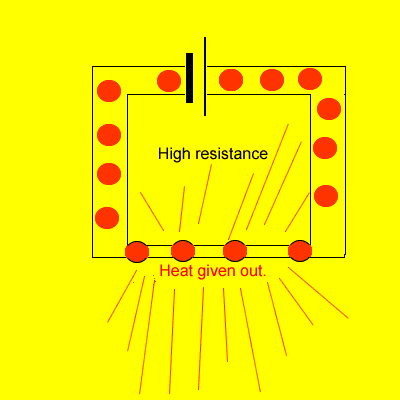Resistance
The current in an electric
circuit depends on the voltage and also on the resistance offered to
the flow of charge through the circuit.
Obviously the greater the voltage the higher the current. While the
greater the resistance the lower the current.
The resistance of a wire depends on its thickness and length.
The longer the wire the greater
the resistance offered to the flow of charge.
Thick wires have less resistance than thin ones.
Current tends to create heat in high resistance wires. The electrons collide with stationary metal atoms and convert some of their kinetic energy into heat energy. The heating coil in a toaster or electric heater is made of high resistance wire. As current passes through the wire it quickly heats up and glows red hot.

